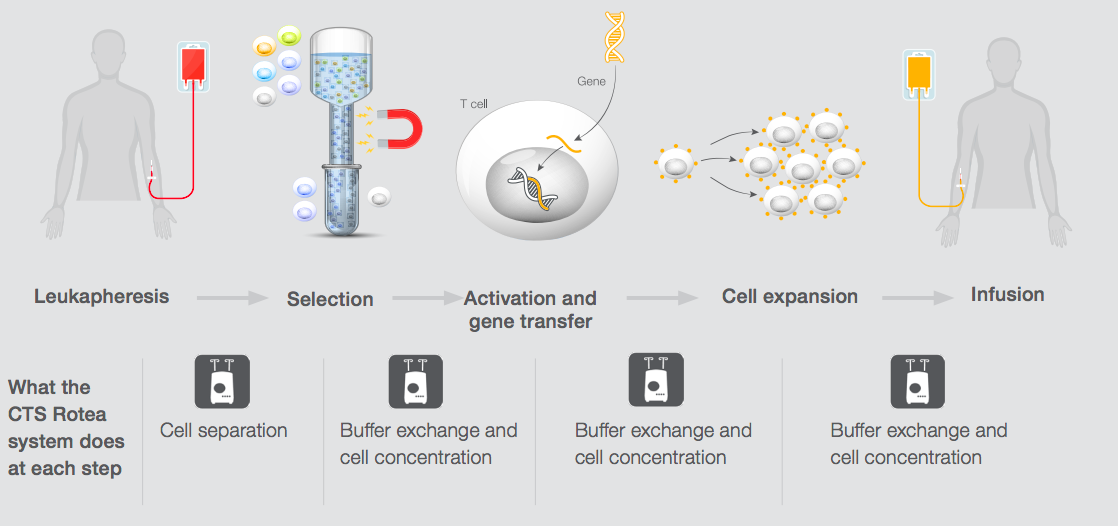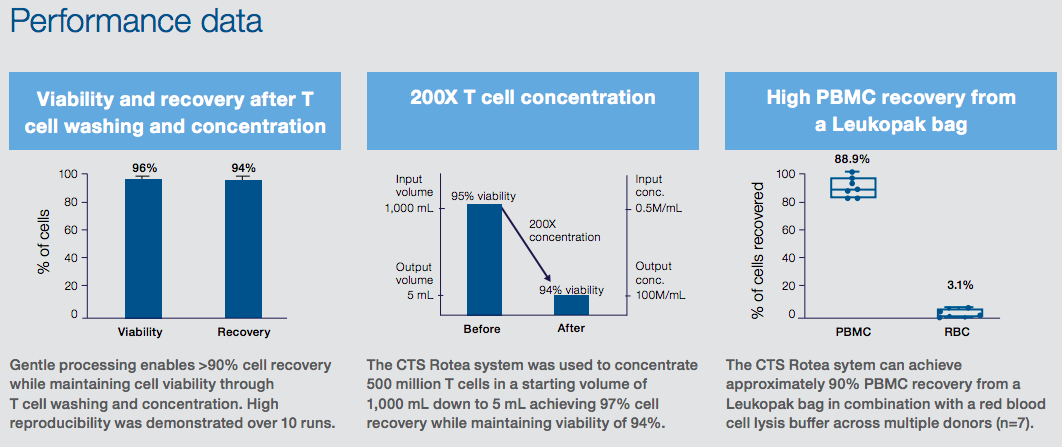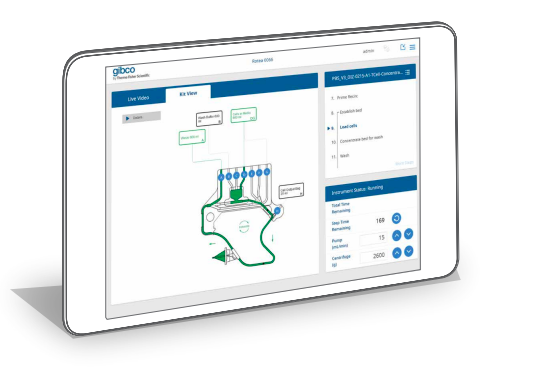
The Rotea Counterflow Centrifugation System Offers a Versatile, Closed System Solution for Cell Therapy Processing
Cell therapy processing requires multiple steps and procedures including cell separation, concentration, washing and others. For a successful cell therapy process, it is important to be able to conduct these activities as simply, safely and efficiently as possible. To improve the efficiency of cell processing operations, Thermo Fisher Scientific launched the multipurpose Gibco™ Cell Therapy Systems (CTS™) Rotea™ Counterflow Centrifugation System. The system uses a closed single-use kit to allow smooth transition from research through commercial manufacturing.
The Value of Closed Systems
Closed systems are particularly important in the processing of cell therapies for clinical and commercial manufacture as they provide the highest containment and product safety protection. The ability for the Rotea system to function as a closed instrument provides a cost benefit as well, because one equipment capital expenditure can be utilized from research through commercial manufacturing.
In addition, using the same equipment from research through process development and manufacturing can cut process development times and delays by eliminating the need to learn and optimize new systems. Closed systems also reduced the requirements and associated costs for clean room space as they can operate in a Class C environment, thus reducing the need for Class B space that is more costly to set up and operate. It also supports a flexible facility by permitting multiple batches to be processed in a shared clean room.
How it Works
The Rotea system employs counterflow centrifugation (CFC) that provides a gentle, but powerful technology for the entire cell therapy processing workflow. The system suspends cells in a fluidized bed by exerting a constant flow force opposite centrifugal forces to provide capabilities otherwise impossible in traditional centrifuges. Fluid suspended cells are concentrated without forming a pellet in the cone and then are washed quickly and efficiently at high recovery rates. Due to the reduced cell density, dead cells can be removed to optimize viability before delivery. By fine-tuning centrifugal speed and flow rate to create an imbalance of forces, cell types of different sizes can be effectively separated. Another unique feature, the Gibco™ CellCam™ is a color camera that visualizes cells live in a fluidized bed, enabling CFC parameter optimization. This allows users to easily fine tune protocols for each application.

Specific Benefits:
Process Flexibility
The Rotea system is highly versatile. By utilizing the straightforward, programmable software, users can create and optimize a wide range of protocols for cell separation, washing and concentration. This enables users to conduct many operations in a single system, thus reducing overall footprint and valuable facility space. Using a proprietary technology, low output volumes can deliver as little as 5 mL of concentrate.

Performance
The system’s gentle processing supports high cell recovery and viability with greater than 95% recovery.

For more performance data, you can visit thermofisher.com/rotea
Intuitive Software
The Rotea system software has a great deal of functionality in a user-friendly graphical user interface (GUI). The system permits users to fine-tune protocol parameters for a variety of applications and can easily switch between R&D and manufacturing operator modes. By using the included protocol builder, users can create, modify, save and upload protocols.

Another great feature of the software is the ability to easily conduct simulations. The software can simulate a protocol in the absence of a physical system, which allows the user to:
- Troubleshoot a protocol
- Determine what bag volumes and run times are required to complete a specific protocol
- Facilitates protocol functionality assessment prior to running the protocol on the instrument
The software also provides process modeling. This lets users access an advanced fluid dynamics model to help them determine, based on their cells and media/buffer, which counterflow centrifuge and pump parameters to start with. It also provides a list of commonly used reagents, buffer, and media that are preinstalled in the model. A library of cell types is also pre-installed in the model; including RBCs, lymphocytes, lymphocytes (small), monocytes, granulocytes, platelets, CHO, amnion, aggregates, T cells, B cells, NK cells, magnetic beads, and more.
In Summary
The Rotea system provides a flexible, cost-effective solution for cell therapy processing. Its closed single-use kit permits smooth transition from research through commercial manufacturing. Excellent support is also included with a field application scientist available to guide users through the system and the software to create a protocol for their specific applications.
To learn more, please see Gibco™ CTS™ Rotea Counterflow Centrifugation System
This post is sponsored by Thermo Fisher Scientific, Inc..